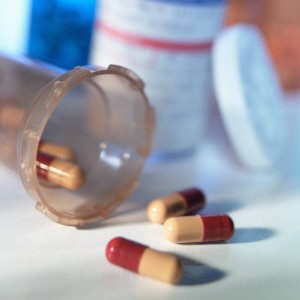 In today’s world especially for those of us with persistent pain, a most important medical document is our medication list. Did you know that it is now are requirement to perform a medication reconciliation during each hospital visit? On admission, nursing must enter your medications and doses into the electronic medical record (EMR). The pharmacy will review what has been ordered for you and your medication list to reconcile them. If something is not ordered you were previously taking, the discrepancy is expected to be addressed.
In today’s world especially for those of us with persistent pain, a most important medical document is our medication list. Did you know that it is now are requirement to perform a medication reconciliation during each hospital visit? On admission, nursing must enter your medications and doses into the electronic medical record (EMR). The pharmacy will review what has been ordered for you and your medication list to reconcile them. If something is not ordered you were previously taking, the discrepancy is expected to be addressed.
You may find that as you are admitted to the hospital, you are not at your best. You feel lousy, you may be unable to remember what medications or how much you take, your list may be incomplete, difficult to read or lost in your paper files or wallet. If you simply state that you take pain medication, some providers become leery or distrustful of you (which is ethically wrong but it happens). The hospital can request a medication list from your primary care provider as verification so it is important the information be complete and correct.
Tip #1: During routine appointments is the best time to review your medication list, for updates on changes made and any errors corrected. There are circumstances where an entry could have been made in error which can easily happen if you have more than one doctor. Medications can be omitted or added incorrectly. Take the time to review your list by either asking for a hard copy before you leave the office or gain access to your EMR through the patient portal, if available. Most have a print option where you can make your own copy to keep with you.
Tip #2: If you do not have easy access to your EMR, make your own list. I have developed a list which is kept on my computer making it is easy to update. I print out a copy when needed. Physicians, nurses, and pharmacists have been ecstatic when they see it. My husband took a copy with him when he had to pick up my pain medication from a pharmacy we use only occasionally. He said the pharmacist got almost giddy and showed it to everyone else working in the pharmacy!
Here is how:
- At the top be sure to include your name and date of birth.
- List any allergies; I include medication as well as environmental and food allergies. I also include medication to which adverse effects make it too dangerous to take (these are not true allergies however important to note, i.e. NSAIDs send me into kidney failure, Keppra causes over sedation, etc.)
- Add the last date the list was updated.
- Name the medication. Rather than creating a table, I just tab over. You make four columns; the first for the medication; the second for the doses (avoiding things like ½ tablet, just enter the milligrams); the third is dosing, how often do you take it. If you have specific times include it here. I take my pain medication around 6AM & 6PM.
- The last column is where to add why you take the medication. As a nurse it always surprised me how many people did not know this very important information. Some medications have several uses; antiseizure medications may be to prevent seizures or are part of a pain plan so you need to be able to tell providers why you use it. Be sure to include over the counter medication, herbs, and topical medications as well. If you are using medical marijuana include it-it is important all providers know what you may have in your system.
An Example:

- Add your pain plan including all medication, non-pharmacological interventions, as well as complementary therapy.
An example: Morphine ER, oxycodone (breakthrough), methotrexate, gabapentin, acetaminophen; massage therapy, water aerobics, rest with distraction, Guided Imagery.
- Last item is to include a list of your contacts starting with your primary including their phone numbers.
Example;
Gerald Smith (spouse) 555-555-5555
Susan Jones (daughter) 544-555-5555
Sam Smith (son) 555-515-5555
An updated list should be kept in your wallet and one placed on your refrigerator (where EMT’s will look for it if an ambulance is called). Print one up to take with you whenever you go to any provider (including your dentist and eye doctor). For my pharmacist, I provide a new list when I have an update or if I have to go to one other than my preferred pharmacy. It is a good idea to print one out if you are going to the hospital and have the time, otherwise, a copy of your wallet list can be made.
Hopefully this will help prevent some errors (especially those of omission) which can literally cause you unneeded and unwanted pain and suffering. Remember to protect that valuable asset: your medication list!

This is an excellent guide to creating a personalized list. I’m missing the pain plan narrative from my own list and will have to add that in. Time for an update. Thank you for this!